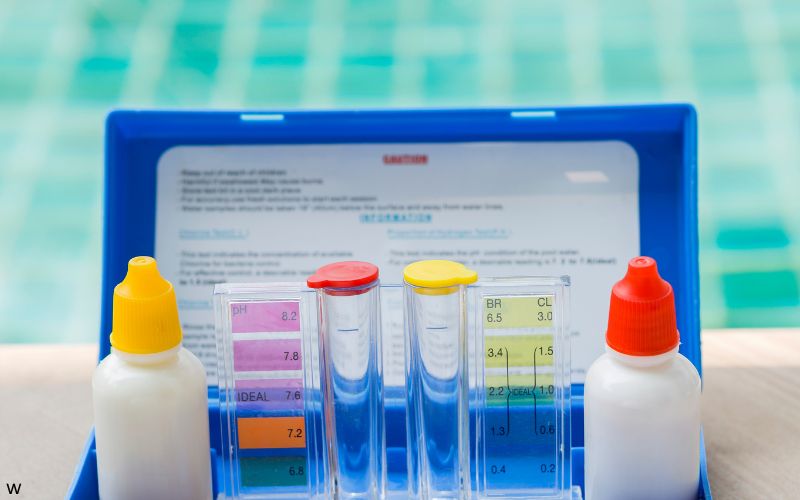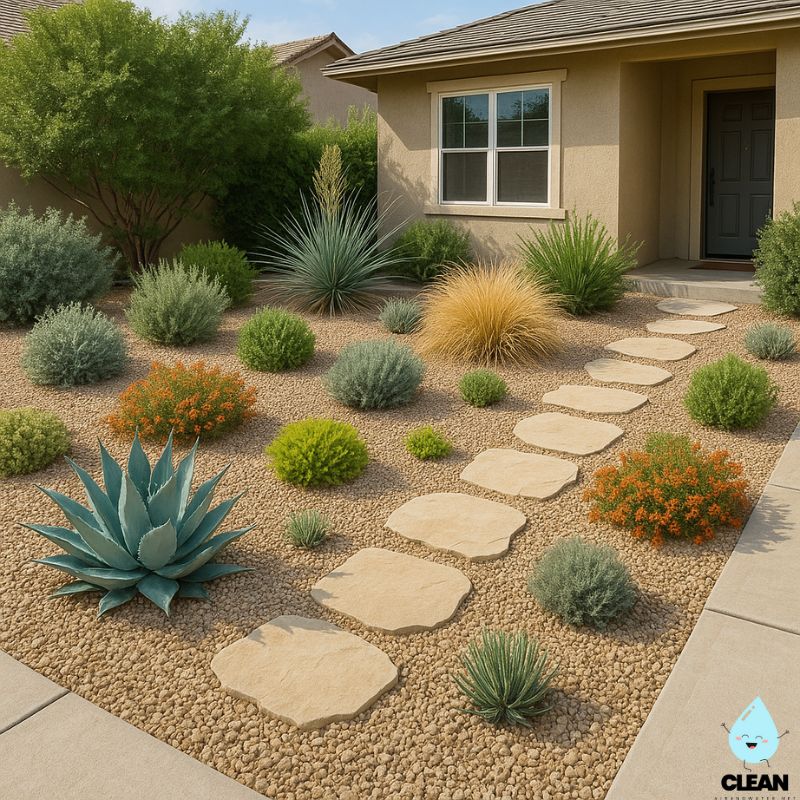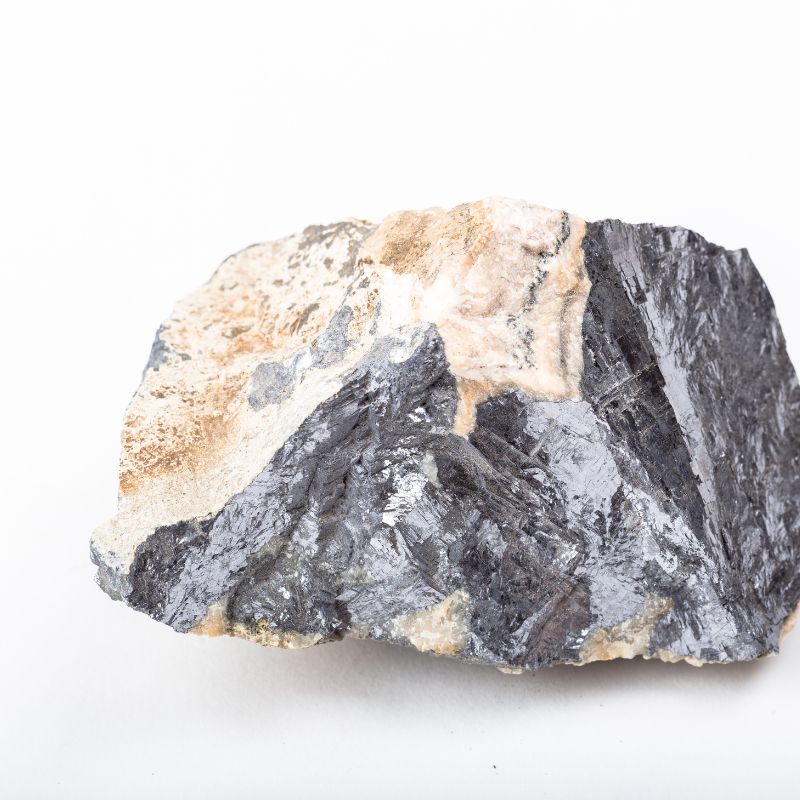Raleigh Water Quality at a Glance
some contamination concerns
Is Raleigh Water Safe to Drink?
High Quality with Monitoring Needed – Raleigh water meets all federal standards and has won awards for exceptional quality, serving over 630,000 residents. However, testing reveals low levels of PFAS compounds (PFBS at 3.1 ppt, PFOS at 4.7 ppt) and disinfection byproducts. The city sources from Falls Lake and Lake Benson, with comprehensive treatment including ozone, coagulation, and activated carbon. Raleigh Water is actively monitoring PFAS and optimizing treatment systems for removal.
⚠️ Key Considerations for Raleigh Residents
- PFAS “Forever Chemicals”: Low detections of PFBS (3.1 ppt), PFOS (4.7 ppt), and other compounds; levels are below new EPA limits but being monitored closely
- Disinfection Byproducts: Trihalomethanes (15.5-14.3 ppb) and haloacetic acids (19.0-14.0 ppb) from chlorine treatment; well below federal limits
- North Carolina PFAS Context: State has widespread PFAS contamination affecting 2.5 million residents; Raleigh levels are relatively low compared to other areas
- Award-Winning Treatment: Both treatment plants receive “Gold Star” honors for exceeding federal standards; comprehensive multi-barrier treatment process
Read the full report below for detailed analysis, city-specific data, and actionable recommendations for Raleigh residents.
Raleigh – North Carolina – Water Quality Report 2025: PFAS Testing, Infrastructure Concerns & Safety across your city
Raleigh Water provides comprehensive water services to more than 630,000 residents across the greater Raleigh metropolitan area, including the neighboring communities of Garner, Wake Forest, Rolesville, Knightdale, Wendell, and Zebulon. Established as a municipal utility, the system encompasses approximately 2,500 miles of water distribution lines, numerous reservoirs and pumping stations, and advanced treatment facilities that deliver an average of 51 million gallons of drinking water daily to North Carolina’s capital city and surrounding areas.
Raleigh sources its drinking water primarily from the Falls Lake Reservoir located in northern Wake County, with Lake Benson in southwest Wake County serving as a secondary source. The Falls Lake water is treated at the E.M. Johnson Water Treatment Plant, while Lake Benson water is processed at the Dempsey E. Benton Water Treatment Plant in southwest Wake County. Raleigh’s water consistently meets all federal and state quality standards and has won multiple awards for exceptional water quality, though the growing metropolitan area faces ongoing challenges with water conservation, infrastructure modernization, and emerging contaminants like PFAS. The utility has implemented significant investments in water treatment technology, conservation initiatives, and watershed protection to ensure sustainable water supply for future generations.

Raleigh Water Quality: Current Status (2024-2025)
Latest Testing Results
- Lead and Copper Monitoring: The most recent comprehensive testing shows that Raleigh Water remains in full compliance with EPA regulations for lead and copper in drinking water, with levels well below the federal action thresholds. Raleigh Water is not aware of any lead service lines in the water system.
- Testing Scope: Raleigh conducts between 6,000 and 7,000 water quality tests monthly (over 85,000 annually) across the system for substances including trace metals, petroleum products, pesticides, and bacteria, with comprehensive monitoring at treatment facilities and throughout the distribution network.
- Compliance Status: For the latest quarter assessed by the U.S. EPA (April 2024 – June 2024), Raleigh’s water was in compliance with federal health-based drinking water standards and consistently meets all North Carolina Department of Environmental Quality regulations.
Water Sources
- Falls Lake Reservoir: Primary source (approximately 80% of supply) located in northern Wake County, which receives water from the Neuse River watershed. The NC Department of Environmental Quality rates Falls Lake as having a “Higher susceptibility” rating to contamination.
- Lake Benson: Secondary source located in southwest Wake County near Garner, providing additional supply security and system redundancy in case of drought or other supply challenges. Also rated as having “Higher susceptibility” to contamination.
- Watershed Protection: Comprehensive watershed management program including land conservation initiatives, streambank restoration, reforestation, removal of abandoned animal waste lagoons, and pollution prevention measures funded by customers at 15 cents per 1,000 gallons (about 60 cents monthly per customer).
Advanced Treatment Technology
- E.M. Johnson Plant: The primary treatment facility processes an average of 41 million gallons per day from Falls Lake using a multi-barrier approach including ozone treatment, coagulation with ferric sulfate, flocculation, sedimentation, filtration with activated carbon, and chloramine disinfection.
- Dempsey E. Benton Plant: The secondary facility processes around 10 million gallons per day from Lake Benson, incorporating advanced technologies including ozone treatment, potassium permanganate pre-oxidation, coagulation, filtration, and chloramine disinfection for exceptional water quality.
- Disinfection Management: Annual temporary switch from chloramine to free chlorine disinfection (typically during the last week of March through the first week of April) maintains system cleanliness and prevents biofilm formation, which can result in higher than normal chlorine residual concentrations.
Infrastructure Modernization
- Treatment Plant Recognition: Both Raleigh Water treatment plants have earned the “Gold Star” honor from the North Carolina Division of Water Resources, awarded to facilities that have received the N.C. Area Wide Optimization Award for exceptional water quality that surpasses federal and state drinking water standards.
- Distribution System Improvements: Implementation of a robust Asset Management Program to systematically replace aging infrastructure, including water mains and service lines, prioritizing areas with highest needs across the 2,500-mile distribution network.
- Smart Water Management: Advanced real-time monitoring systems throughout the distribution network to improve water quality management, reduce losses, and enhance overall system reliability with turbidity monitoring as a key indicator of treatment effectiveness.
Customer Protection Initiatives
Raleigh Water provides extensive customer support through various programs, including free lead testing kits for concerned residents (especially those in homes built before 1986) available by calling 919-996-4420 or visiting raleighnc.gov, and the Utility Customer Assistance Program offering discounts for qualifying low-income customers. Educational outreach helps residents understand water quality, conservation practices, and the value of water resources in central North Carolina. Raleigh’s commitment to water quality includes transparent communication through annual and monthly water quality reports, available to all customers. The utility’s investments in advanced treatment technologies including ozone and activated carbon, source water protection, and PFAS monitoring demonstrate its dedication to providing safe, reliable drinking water while preparing for future challenges including population growth, climate variability, and emerging contaminants.
Recommendations for Raleigh Residents

Test Your Water
Request a free lead testing kit from Raleigh Water by calling 919-996-4420 or emailing watersamples@raleighnc.gov. Testing is especially recommended for homes built before 1970 or plumbed between 1962 and 1986 with potential lead solder or components.

Conserve Water
Take advantage of Raleigh’s Water Conservation Programs, including free water conservation kits with efficient fixtures. Follow the Permanent Conservation Measures guidelines for outdoor irrigation to reduce water waste and support the city’s watershed protection efforts.

Consider Home Filtration
While Raleigh’s water meets all standards and has won quality awards, homes with older plumbing may benefit from NSF-certified filters (Standard 53) for drinking and cooking water, especially for reducing disinfection byproducts and emerging contaminants like PFAS.

Participate in Rainwater Rewards
Apply for the Raleigh Rainwater Rewards program, which provides funding for rain gardens, permeable pavement, and rain cisterns that help reduce stormwater pollution and conserve water. Visit raleighnc.gov/rainwater-rewards for details and support the city’s broader “One Water Plan” approach.

Report Issues
Contact Raleigh Water Customer Care at 919-996-3245 (available 24/7) for water main breaks, pressure problems, or quality concerns. Report leaks promptly to help conserve water and maintain system integrity throughout the 2,500-mile distribution network.
Frequently Asked Questions
Is Raleigh’s tap water safe to drink?
Yes, Raleigh’s tap water meets all federal and state drinking water standards and has won awards for exceptional quality. The city’s water comes from Falls Lake Reservoir and Lake Benson, both of which undergo comprehensive treatment including ozone oxidation, coagulation, filtration, and chloramine disinfection.
Raleigh Water conducts between 6,000 and 7,000 tests monthly (over 85,000 annually) to ensure water quality. Treatment processes at both the E.M. Johnson and Dempsey E. Benton plants incorporate multiple barriers against contaminants, ensuring safe drinking water. Both plants have received “Gold Star” honors for exceeding federal standards. The utility’s commitment to water quality is demonstrated by its continuous monitoring and transparent reporting through monthly and annual water quality reports available to all customers.
Why does my water sometimes taste or smell different?
Occasional taste and odor changes can occur due to several factors:
1. Annual disinfection switch: Each spring (typically the last week of March through the first week of April), Raleigh Water temporarily switches from chloramine to free chlorine disinfection, which can result in higher than normal chlorine residual concentrations and a more noticeable chlorine smell
2. Seasonal water quality changes: Natural variations in source water, including “earthy” or “musty” smells from seasonal fluctuations in naturally occurring algae and algal activity in the lakes
3. Home plumbing: Internal plumbing issues or infrequently used faucets can sometimes cause taste or odor concerns
If taste or odor issues persist, contact Raleigh Water at 919-996-3245 for assistance. The utility uses ozone and activated carbon to reduce seasonal taste and odor issues, though it can take time to impact the entire distribution system.
Does Raleigh have lead in its water system?
Raleigh Water has been and continues to be compliant with all federal and state regulations for lead and copper in drinking water:
• Lead service lines: Raleigh Water is not aware of any lead service lines in its service area, though some older neighborhoods may have galvanized iron service lines with lead components installed prior to 1960
• Corrosion control: The utility uses industry best practices in water treatment to prevent leaching of lead and copper from plumbing, including silicate corrosion inhibitors and pH optimization to 8.4 pH
• Testing results: Recent lead and copper sampling shows levels well below federal action limits, with the system monitoring at least 110 homes for lead every three years
• Free testing: Residents can request a free lead testing kit by calling 919-996-4420 or emailing watersamples@raleighnc.gov
Homes built before 1970 or plumbed between 1962 and 1986 have a higher likelihood of containing lead solder or components in internal plumbing, which is why Raleigh offers free testing for concerned residents.
Are there water restrictions in Raleigh?
Raleigh currently operates under Permanent Conservation Measures, which are year-round water use guidelines:
Permanent Conservation Measures:
• Irrigation limited to three days per week (odd-numbered addresses on Tuesday, Thursday, Saturday; even-numbered addresses on Wednesday, Friday, Sunday)
• No outdoor watering between 10 a.m. and 6 p.m. to minimize evaporation
• No water waste (runoff onto streets, sidewalks)
Drought Response:
During severe drought conditions, Raleigh Water may implement additional restrictions including:
• Further limits on outdoor watering
• Restrictions on vehicle washing, pressure washing, and filling of swimming pools
Current status and restrictions are available at raleighnc.gov/water or by calling 919-996-3245.
Quality News About Your Water
Get the comprehensive water quality news coverage you need with our dedicated US Water News Service. From coast to coast, we deliver in-depth reporting and expert analysis on PFAS contamination, EPA regulatory changes, infrastructure developments, and emerging water safety issues affecting communities nationwide. While mainstream media only covers the biggest stories, we provide the detailed, ongoing coverage that helps you understand the full scope of America’s water challenges. Whether you’re a concerned citizen, water professional, or community leader, our daily updates and analytical insights keep you informed about the issues that matter most to public health and environmental safety.
Contaminants of Concern

Disinfection Byproducts
Source: Formed when disinfectants such as chlorine or chloramine react with naturally occurring organic matter in source water; may be more prevalent during warmer months
Health Effects: Long-term exposure to elevated levels may increase risk of certain cancers and potentially affect liver, kidney, and central nervous system
Current Levels: 2023 testing showed trihalomethanes at 15.5 ppb (E.M. Johnson) and 14.3 ppb (Dempsey E. Benton), and haloacetic acids at 19.0 ppb (E.M. Johnson) and 14.0 ppb (Dempsey E. Benton) EPA Limits: 80 ppb for total trihalomethanes (TTHMs) and 60 ppb for haloacetic acids (HAA5)

PFAS Compounds
Source: Per- and polyfluoroalkyl substances originating from industrial processes, firefighting foams, and consumer products that can enter source waters
Health Effects: Research suggests potential concerns including impacts on immune system, thyroid function, cholesterol levels, and possible links to certain cancers
Current Status: 2023 testing detected low levels including PFBS at 3.1 ppt (E.M. Johnson only), PFOS at 4.7 ppt (E.M. Johnson only), PFBA at 5.97 ppt (E.M. Johnson) and 5.40 ppt (Dempsey E. Benton). Raleigh Water is optimizing current treatment systems and evaluating new technologies for PFAS removal. EPA Limits: New EPA regulations set limits at 4 ppt for PFOA and PFOS, with hazard index calculations for other compounds
Please read – our information
The information presented on cleanairandwater.net is compiled from official water quality reports, trusted news sources, government websites, and public health resources. While we strive for accuracy and thoroughness in our presentations, we are not scientists, engineers, or qualified water quality professionals.
Our mission is to present water quality information in an accessible, real-world format that helps people understand what’s in their water and make informed decisions about their health and safety. We believe that complex environmental information should be available to everyone in a format that’s easy to understand.
We make every effort to ensure our content is current and accurate, but we cannot guarantee that all information is complete or error-free. This website should not replace official communications from your local water utility or health department. We always recommend consulting official sources for the most up-to-date information regarding your specific water system.
Clean Air and Water is not liable for any unintentional errors, omissions, or outdated information. The content on this site is provided for informational purposes only and should not be considered professional advice.


